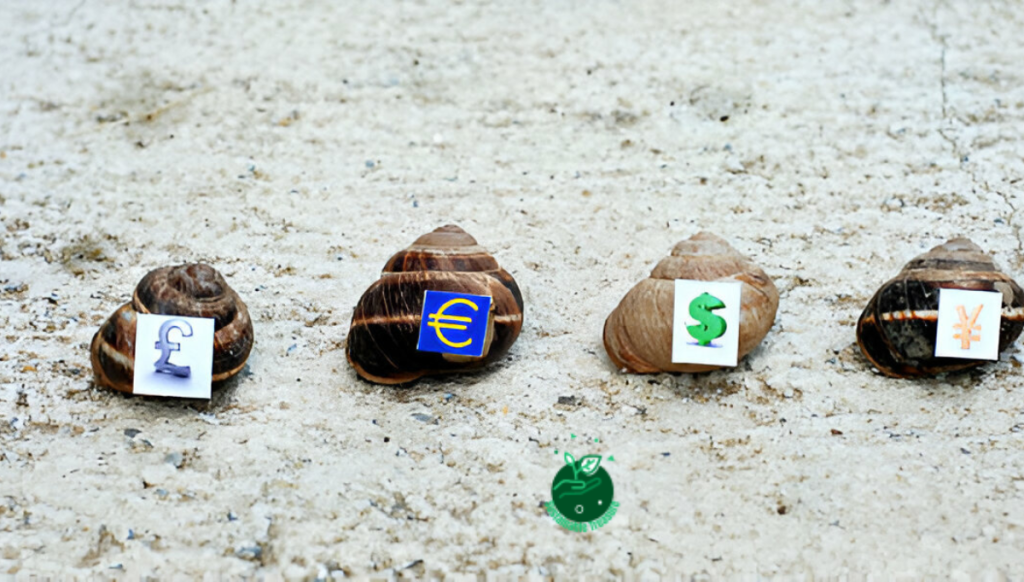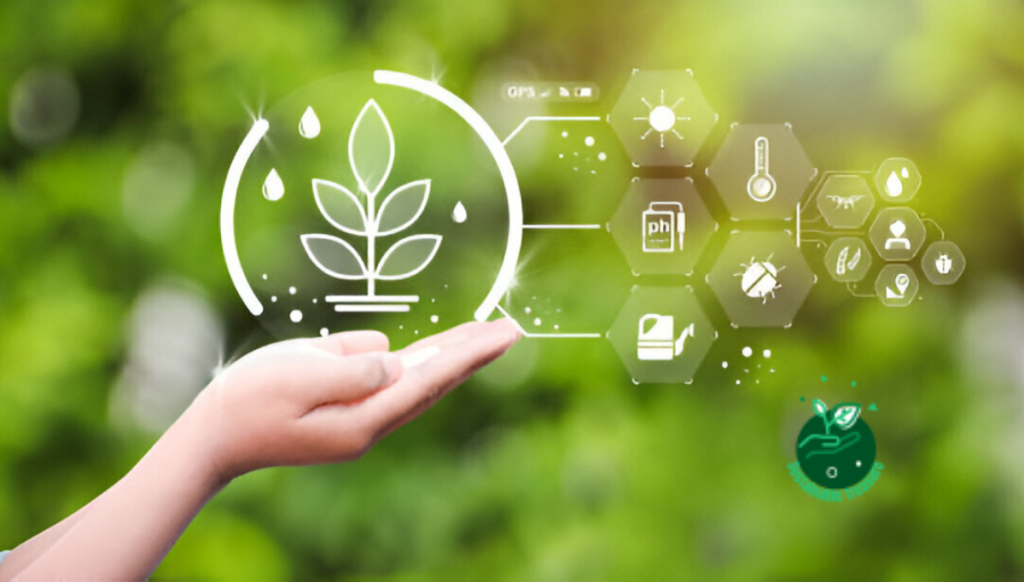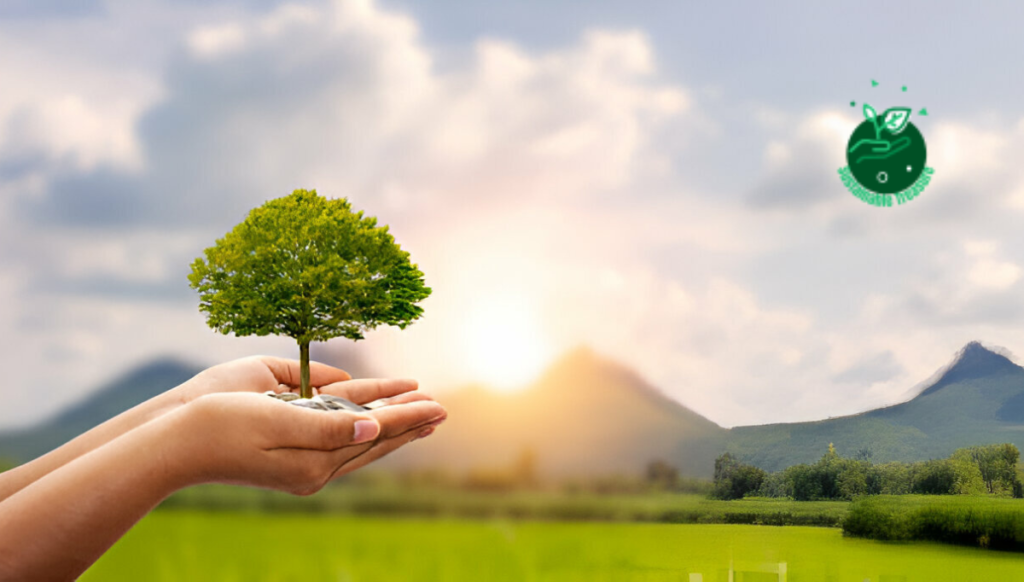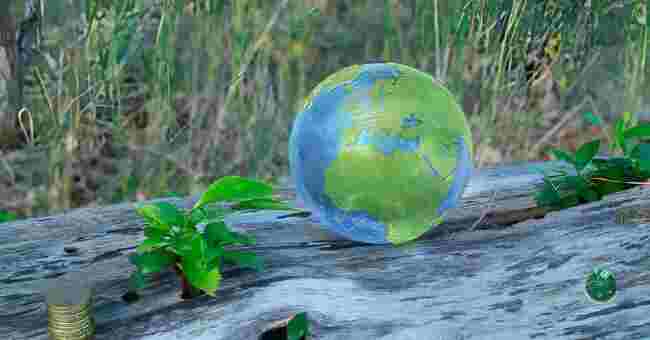Table of Contents
Investing in Wildlife Rehabilitation and Rescue – Is it Really Worth It? Yes, investing in wildlife rehabilitation and rescue efforts is truly worthwhile and essential for preserving our planet’s biodiversity. Let me share a heartwarming story that illustrates the profound impact of these initiatives.
During a devastating oil spill, a team of dedicated volunteers from a renowned wildlife rescue organization worked tirelessly to save countless seabirds coated in thick, toxic sludge.
With expertise, empathy, and unwavering determination, they meticulously cleaned and nursed each bird back to health, ultimately releasing them into their natural habitats, symbolizing hope and resilience.
In the article, I will delve deeper into the significance of investing in wildlife rehabilitation and rescue, highlighting the multifaceted benefits and the tangible ways you can contribute to this noble cause.
Here we go.
The Importance of Wildlife Rehabilitation and Rescue

Wildlife rehabilitation and rescue centers are dedicated to providing care and treatment for injured, orphaned, or displaced animals. These facilities are often the last line of defense for many species, offering them a second chance at life and a potential return to their natural habitats.
- Every year, countless animals fall victim to human activities, such as habitat destruction, pollution, and vehicular collisions. Without intervention, these animals would face certain death or suffer from debilitating injuries. Wildlife rehabilitation centers step in to provide essential medical care, nurturing, and rehabilitation services, allowing these creatures to recover and thrive once again.
- Beyond individual animal care, these centers also play a vital role in species conservation. By rehabilitating and releasing healthy individuals back into their natural environments, they contribute to maintaining stable population levels and preserving genetic diversity. This is particularly crucial for endangered and threatened species, where every individual counts in the fight against extinction.
The Impact of Your Investment
Your investment in wildlife rehabilitation and rescue efforts can have a profound and lasting impact on the natural world. From saving individual lives to supporting broader conservation initiatives, your contribution can make a tangible difference.
- When you donate to these organizations, you are directly contributing to the care and treatment of injured or orphaned animals. Your funds support the procurement of essential medical supplies, specialized housing, and the employment of trained veterinarians and wildlife specialists. Your investment ensures that these vulnerable creatures receive the best possible chance at recovery and eventual release back into their natural habitats.
- Moreover, your investment supports research and education initiatives aimed at preventing future harm to wildlife. These organizations often collaborate with local communities, raising awareness about the importance of preserving natural habitats and promoting sustainable practices. By investing in these efforts, you are helping to create a future where humans and wildlife can coexist harmoniously.
Choosing the Right Wildlife Rehabilitation and Rescue Organization
With countless organizations dedicated to wildlife rehabilitation and rescue, it can be challenging to determine where to direct your investment. Here are some factors to consider when selecting a reputable and effective organization:
- Accreditation and Licensing: Ensure that the organization is properly accredited and licensed to operate as a wildlife rehabilitation facility. This guarantees that they adhere to strict standards and regulations regarding animal care and treatment.
- Transparency and Accountability: Look for organizations that openly share their mission, goals, and financial information. Transparency fosters trust and ensures that your investment is being utilized effectively.
- Success Rate and Impact: Investigate the organization’s track record in successfully rehabilitating and releasing animals back into the wild. Additionally, consider their broader impact on conservation efforts and community outreach initiatives.
- Partnerships and Collaborations: Organizations that collaborate with reputable institutions, such as universities, research centers, and government agencies, often have access to valuable resources and expertise.
By carefully evaluating these factors, you can make an informed decision and ensure that your investment truly makes a difference in the realm of wildlife rehabilitation and rescue.
Highlighted Wildlife Rehabilitation and Rescue Organizations
To assist you in your journey of supporting wildlife conservation efforts, we have compiled a list of reputable and impactful wildlife rehabilitation and rescue organizations. These organizations have demonstrated a commitment to animal welfare and environmental stewardship:
- The Wildlife Rehabilitation Center of Minnesota
- Dedicated to providing high-quality medical care and rehabilitation for injured, sick, and orphaned wildlife in Minnesota.
- Operates a state-of-the-art wildlife hospital and rehabilitation facility.
- Offers educational programs to promote coexistence between humans and wildlife.
- International Bird Rescue
- Specializes in the rescue, rehabilitation, and release of aquatic birds affected by oil spills and other environmental disasters.
- Has played a vital role in responding to major oil spill incidents worldwide.
- Advocates for policies and practices that prioritize the protection of aquatic ecosystems.
- Wildlife Rescue Association of British Columbia
- Operates a network of rehabilitation centers across British Columbia, Canada.
- Provides medical treatment and care for injured, orphaned, and distressed wildlife.
- Actively engages in public education and outreach programs to raise awareness about wildlife conservation.
These organizations represent just a few examples of the dedicated efforts being made to protect and preserve wildlife. By supporting their initiatives, you can contribute to a brighter future for countless species and their natural habitats.
Creative Ways to Support Wildlife Rehabilitation and Rescue Efforts
While financial contributions are invaluable, there are numerous creative ways to support wildlife rehabilitation and rescue efforts beyond monetary donations. Here are some ideas to consider:
- Volunteer Opportunities: Many organizations welcome volunteers to assist with various tasks, such as animal care, facility maintenance, and educational outreach programs. Donating your time and skills can make a significant impact.
- Fundraising Events: Organize or participate in fundraising events like walks, runs, or community gatherings to raise awareness and generate funds for wildlife rehabilitation and rescue initiatives.
- Spread Awareness: Utilize social media platforms to share information about wildlife conservation efforts, success stories, and ways to get involved. Your voice can inspire others to join the cause.
- Sustainable Living: Adopt sustainable practices in your daily life, such as reducing waste, conserving energy, and minimizing your environmental footprint. By living more consciously, you can help preserve natural habitats and reduce the threats faced by wildlife.
- Support Ethical Tourism: When traveling, choose eco-friendly accommodations and tour operators that prioritize wildlife conservation and responsible tourism practices.
By exploring these creative avenues, you can contribute to wildlife rehabilitation and rescue efforts in ways that align with your interests, skills, and lifestyle.
The Role of Corporate Social Responsibility
Corporations play a vital role in shaping our environmental landscape, and their involvement in supporting wildlife rehabilitation and rescue efforts can have a significant impact. By embracing corporate social responsibility (CSR) initiatives, businesses can demonstrate their commitment to sustainability and environmental stewardship.
- Companies can allocate a portion of their profits or resources to support wildlife rehabilitation and rescue organizations. This not only contributes to meaningful conservation efforts but also enhances the company’s reputation and public image. Employees may feel a sense of pride in working for an organization that prioritizes environmental responsibility, fostering a positive work culture.
- Additionally, corporations can implement sustainable practices within their operations, such as reducing waste, minimizing environmental impact, and promoting eco-friendly initiatives. By leading by example, businesses can inspire their employees, customers, and stakeholders to adopt similar practices, creating a ripple effect that extends beyond the corporate realm.
The Power of Collaboration
Fostering collaboration among various stakeholders is essential for maximizing the impact of wildlife rehabilitation and rescue efforts. By working together, organizations, communities, and individuals can leverage their collective resources and expertise to achieve greater success.
- Collaboration between wildlife rehabilitation centers, research institutions, and government agencies can lead to groundbreaking discoveries and advancements in animal care and conservation practices. Sharing knowledge, resources, and data can accelerate progress and facilitate more effective interventions.
- Engaging local communities is also crucial for the success of wildlife rehabilitation and rescue initiatives. By raising awareness and involving residents in conservation efforts, organizations can foster a sense of ownership and responsibility towards protecting local wildlife. Community-driven initiatives can contribute to habitat preservation, reducing human-wildlife conflicts, and promoting sustainable practices.
The Emotional Connection: Inspiring Empathy and Action
While facts and statistics are valuable in highlighting the importance of wildlife rehabilitation and rescue, it is often the emotional connection that truly inspires individuals to take action. By sharing compelling stories and narratives, organizations can foster a deep sense of empathy and compassion, motivating people to become actively involved in supporting these noble causes.
- Powerful storytelling has the ability to humanize the plight of injured or orphaned wildlife, allowing people to connect on a personal level with the individual animals being rescued and rehabilitated. Showcasing the journey of a particular animal, from its initial state of distress to its eventual recovery and release, can evoke a profound emotional response in audiences, prompting them to take action and contribute to the cause.
- Furthermore, sharing the dedication and passion of the individuals working tirelessly in wildlife rehabilitation centers can inspire others to follow in their footsteps. By highlighting the selfless efforts of veterinarians, caregivers, and volunteers, organizations can ignite a sense of purpose and motivation within their supporters, encouraging them to actively participate in conservation efforts through various means, such as volunteering, fundraising, or advocating for policy changes.
The Future of Wildlife Rehabilitation and Rescue
As we look towards the future, the importance of wildlife rehabilitation and rescue efforts will only continue to grow. With increasing pressure on natural habitats and the escalating effects of climate change, proactive measures are crucial to ensure the survival and well-being of countless species.
- Advancements in veterinary medicine and rehabilitation techniques will play a pivotal role in improving the quality of care provided to injured or sick animals. By investing in research and development, organizations can stay at the forefront of cutting-edge practices, enhancing their ability to successfully rehabilitate and reintroduce animals into their natural environments.
- Additionally, the integration of technology and data-driven approaches will revolutionize the way we approach wildlife rehabilitation and rescue. Remote monitoring systems, predictive analytics, and artificial intelligence can assist in identifying potential threats, optimizing care protocols, and informing conservation strategies. By embracing these technological advancements, organizations can become more proactive in their efforts, mitigating risks and maximizing their impact on wildlife populations.
Educational Initiatives: Fostering a Sustainable Future
Education is a powerful tool in shaping the attitudes and behaviors of future generations. By investing in educational initiatives, wildlife rehabilitation and rescue organizations can cultivate a deeper understanding and appreciation for the natural world, inspiring individuals to become stewards of the environment.
- Engaging with schools and educational institutions is crucial for instilling a sense of environmental responsibility from an early age. Through interactive programs, workshops, and hands-on experiences, children can learn about the importance of biodiversity, the challenges faced by wildlife, and the role they can play in conservation efforts. By capturing their imagination and nurturing a love for nature, these initiatives can foster a generation of environmentally conscious citizens.
- Moreover, community outreach programs and public awareness campaigns can reach a broader audience, educating people of all ages about the significance of wildlife rehabilitation and rescue efforts. By providing practical tips and guidance on how to minimize human-wildlife conflicts, reduce environmental impact, and support local conservation initiatives, organizations can empower individuals to make informed decisions and take meaningful actions towards a more sustainable future.
Addressing Environmental Challenges
Wildlife rehabilitation and rescue efforts are inextricably linked to broader environmental challenges, such as habitat loss, pollution, and climate change. Addressing these issues requires a multifaceted approach that combines conservation efforts with sustainable practices and policy changes.
- Habitat preservation and restoration are crucial for maintaining healthy and thriving wildlife populations. By supporting initiatives that protect and restore natural habitats, individuals and organizations can ensure that animals have safe havens to call home. This can involve reforestation projects, wetland conservation efforts, and the establishment of protected areas.
- Addressing the root causes of environmental pollution is also paramount. From reducing plastic waste and promoting responsible waste management to advocating for stricter regulations on industrial emissions, collective action can help mitigate the detrimental effects of pollution on wildlife and their habitats. By supporting organizations and initiatives focused on environmental cleanup and pollution prevention, individuals can contribute to creating a cleaner and safer world for all living beings.
The Intersection of Wildlife Rehabilitation and Indigenous Knowledge
Indigenous communities have long held a deep reverence for the natural world and have accumulated a wealth of knowledge about the intricate relationships between humans and the environment. Recognizing and embracing this indigenous wisdom can greatly benefit wildlife rehabilitation and rescue efforts.
- Traditional ecological knowledge, passed down through generations, offers invaluable insights into sustainable practices, ecosystem management, and wildlife conservation techniques. By collaborating with indigenous communities and incorporating their knowledge into rehabilitation and rescue initiatives, organizations can tap into a rich reservoir of wisdom and experience.
- Moreover, engaging with indigenous communities fosters a sense of cultural appreciation and respect, promoting cross-cultural understanding and cooperation. By acknowledging and valuing their traditional practices and perspectives, wildlife rehabilitation and rescue organizations can forge meaningful partnerships that ultimately benefit both humans and the natural world.
The Economic Impact of Wildlife Rehabilitation and Rescue
While the primary focus of wildlife rehabilitation and rescue efforts is the preservation of biodiversity and the well-being of animals, these initiatives can also have significant economic implications for local communities and regions.
- Thriving wildlife populations can contribute to the growth of eco-tourism industries, attracting visitors from around the world who seek to experience and appreciate the natural beauty and diversity of a region. By supporting wildlife rehabilitation and rescue organizations, communities can ensure the long-term sustainability of these valuable tourism assets, generating revenue and creating employment opportunities.
- Additionally, healthy ecosystems supported by effective wildlife conservation efforts provide invaluable services, such as water purification, soil fertility, and climate regulation. These ecosystem services have direct economic benefits for sectors like agriculture, forestry, and even public health, demonstrating the far-reaching impact of wildlife rehabilitation and rescue initiatives.
The Role of Legislation and Policy
Effective legislation and policy play a crucial role in supporting wildlife rehabilitation and rescue efforts and ensuring the long-term protection of species and their habitats. By advocating for strong environmental laws and regulations, individuals and organizations can create a framework that safeguards wildlife and promotes conservation.
- On a national and international level, policies that address issues such as wildlife trafficking, habitat destruction, and climate change can have a profound impact on the success of rehabilitation and rescue initiatives. By supporting organizations that lobby for stronger environmental protections and actively participate in policy discussions, individuals can contribute to shaping a future where wildlife and their habitats are prioritized.
- At the local level, communities can work towards implementing bylaws and ordinances that promote coexistence between humans and wildlife. This can include measures such as restricting development in sensitive areas, regulating hunting and fishing practices, and enforcing penalties for activities that harm or disrupt wildlife populations. By engaging with local authorities and advocating for wildlife-friendly policies, individuals can play an active role in creating a more sustainable and harmonious environment.
Celebrating Success Stories
While the challenges faced in wildlife rehabilitation and rescue can often seem daunting, it is essential to celebrate the successes and milestones achieved along the way.
These stories of triumph serve as a source of inspiration and motivation, reminding us of the profound impact our efforts can have on the natural world.
- Sharing the heartwarming tales of animals that have been successfully rehabilitated and released back into the wild can ignite hope and encourage continued support for these initiatives. From the story of an injured eagle regaining its ability to soar to the tale of an orphaned bear cub being nurtured and prepared for independence, these narratives showcase the resilience of nature and the dedication of those working tirelessly to protect it.
- Celebrating the achievements of wildlife rehabilitation and rescue organizations, such as reaching significant milestones in the number of animals treated or the establishment of new facilities, can also inspire others to join the cause. By highlighting these accomplishments, organizations can attract new supporters, volunteers, and partners, fostering a sense of collective progress and reinforcing the belief that our efforts, no matter how small, can contribute to a greater good.
By investing in wildlife rehabilitation and rescue efforts, we not only ensure the survival of countless species but also contribute to the preservation of our planet’s rich biodiversity.
Your support, whether through financial contributions, volunteering, or advocacy, can make a tangible difference in the lives of injured and orphaned animals, while simultaneously promoting broader conservation initiatives.
Together, we can create a future where humans and wildlife coexist harmoniously, preserving the natural wonders that surround us for generations to come.
FAQs

Why is wildlife rehabilitation and rescue important?
Wildlife rehabilitation and rescue efforts play a critical role in preserving biodiversity and ensuring the survival of countless species.
By providing medical care, treatment, and rehabilitation to injured, orphaned, or displaced animals, these initiatives offer a second chance at life and a potential return to their natural habitats.
Additionally, they contribute to maintaining stable population levels and genetic diversity, which is crucial for preventing extinction, especially for endangered and threatened species.
How can I support wildlife rehabilitation and rescue organizations?
There are numerous ways to support wildlife rehabilitation and rescue organizations. Financial contributions are essential, as they help fund medical supplies, specialized housing, and staffing.
Volunteering your time and skills, participating in fundraising events, and spreading awareness through social media platforms are also valuable contributions.
Furthermore, adopting sustainable practices in your daily life, such as reducing waste and minimizing your environmental footprint, can help preserve natural habitats and reduce threats to wildlife.
How do I choose a reputable wildlife rehabilitation and rescue organization?
When selecting an organization to support, consider factors such as accreditation and licensing, transparency and accountability, success rates and impact, and partnerships with reputable institutions.
Look for organizations that openly share their mission, goals, and financial information, and have a proven track record of successfully rehabilitating and releasing animals back into the wild.
What role can corporations play in supporting wildlife rehabilitation and rescue efforts?
Corporations can play a significant role in supporting wildlife rehabilitation and rescue efforts through corporate social responsibility (CSR) initiatives.
This can involve allocating a portion of their profits or resources to support these organizations, as well as implementing sustainable practices within their operations, such as reducing waste and minimizing environmental impact. By leading by example, businesses can inspire their employees, customers, and stakeholders to adopt similar practices.
Why is collaboration important in wildlife rehabilitation and rescue efforts?
Collaboration among various stakeholders, including organizations, communities, and individuals, is essential for maximizing the impact of wildlife rehabilitation and rescue efforts.
By working together, organizations can leverage collective resources and expertise, leading to groundbreaking discoveries and advancements in animal care and conservation practices.
Additionally, engaging local communities fosters a sense of ownership and responsibility towards protecting local wildlife, contributing to habitat preservation and promoting sustainable practices.
How can education initiatives foster a sustainable future?
Education is a powerful tool in shaping the attitudes and behaviors of future generations towards the environment. By investing in educational initiatives, wildlife rehabilitation and rescue organizations can cultivate a deeper understanding and appreciation for the natural world.
Engaging with schools and educational institutions, as well as community outreach programs and public awareness campaigns, can instill a sense of environmental responsibility and empower individuals to make informed decisions and take meaningful actions towards a more sustainable future.
How are wildlife rehabilitation and rescue efforts linked to broader environmental challenges?

Wildlife rehabilitation and rescue efforts are inextricably linked to broader environmental challenges, such as habitat loss, pollution, and climate change.
Addressing these issues requires a multifaceted approach that combines conservation efforts with sustainable practices and policy changes.
Supporting initiatives that protect and restore natural habitats, promoting responsible waste management, and advocating for stricter regulations on industrial emissions can help mitigate the detrimental effects of environmental degradation on wildlife and their habitats.
Why is it important to celebrate success stories in wildlife rehabilitation and rescue?
Celebrating success stories in wildlife rehabilitation and rescue is essential for fostering hope and motivation. Sharing heartwarming tales of animals successfully rehabilitated and released back into the wild, as well as highlighting the achievements of organizations, can inspire others to join the cause and contribute to these initiatives.
These narratives showcase the resilience of nature and the dedication of those working tirelessly to protect it, reminding us of the profound impact our efforts can have on the natural world.
Conclusion
As we reflect on the importance of investing in wildlife rehabilitation and rescue, it becomes evident that these efforts are not merely acts of compassion but crucial steps towards preserving the delicate balance of our natural world.
From providing medical care and sanctuary to injured and orphaned animals to supporting broader conservation initiatives, our contributions make a tangible difference.
Remember, every individual can play a role in this noble cause, whether through financial support, volunteering, or advocating for policy changes.
By working together, we can create a future where wildlife thrives, and humanity coexists harmoniously with the incredible biodiversity that surrounds us.
Take action today. Explore the organizations mentioned, research local initiatives, and commit to making a positive impact. Together, we can ensure that the wonders of nature are preserved for generations to come.
Image: Credit iStock



